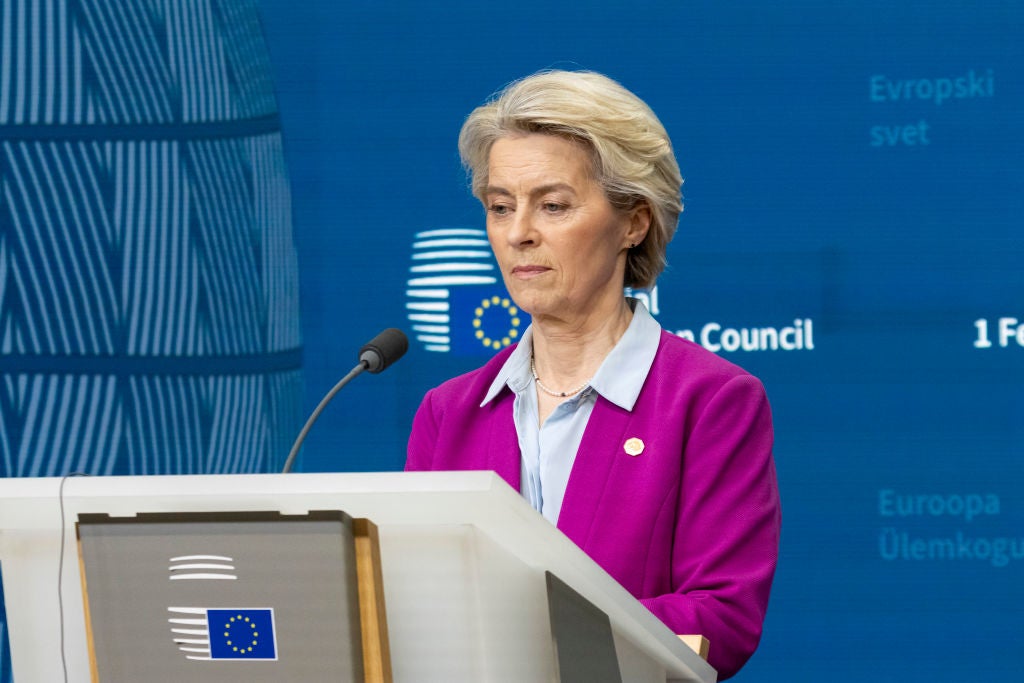On Tuesday 6 February, the European Commission will present its long-awaited proposal for an EU 2040 emissions reduction target. The big question is whether President Ursula von der Leyen will stick with the 90% reduction target found in a leaked initial draft, despite political headwinds. Some are also asking how serious it is to propose ambitious targets when the Commission can see that EU national governments are not doing what they need to do to meet the existing 2030 target of 55% compared with 1990 levels. A recent analysis of draft EU national climate plans was dispiriting.
Under EU climate law, national governments must submit final National Energy and Climate Plan (NECPs) to the Commission by June this year, detailing how they are going to meet the EU’s climate targets. Analysis of the draft NECPs drawn up so far, published last week by the European Climate Neutrality Observatory, has found they are not nearly robust enough.
The report looked at the NECPs of five countries: Italy, Hungary, the Netherlands, Spain and Sweden. It found them to have “significant transparency gaps as regards setting out how the 2030 emission reduction targets will be delivered”. In Italy, 39% of the climate policies are not transparently laid out, while in Hungary 100% of the purported policies are not transparent. The report “reveals significant risks of inadequate infrastructure, resource shortages and failure to meet 2030 climate targets”.
Inadequate national climate plans present a significant risk to EU climate goals. “Clear and robust NECPs are one of the key tools available,” the observatory says in the report. “They are also a powerful way to reinforce the collaboration and coordinated action across member states if sufficient focus is set on the coherence across countries.” The plans need to be significantly improved before they are submitted in June, it says, otherwise the Commission should send national governments back to the drawing board. The observatory is an independent NGO launched last year to focus on progress monitoring.
However, there are best practice examples that can serve as inspiration. For instance, Sweden’s plan was found to be the most robust out of the five examined, and it may be that there are robust plans that have simply been poorly communicated. “It is not always possible to state to which extent the transparency gaps are due to detailed plans actually not existing, and to which extent it is simply an incomplete representation of existing information,” the report says.
The observatory notes that this year’s submissions are critical because the next plans are not due for another five years. Member states need to show how they expect to contribute to the EU’s collective targets such as the binding 42.5% EU renewable energy goal for 2030, the 11.7% savings (compared with projections) energy efficiency target and the overall 55% emissions reduction target. They are also an important signal to investors, which will base investment decisions on these five-year plans.
The Commission already provided feedback to national governments based on early drafts that were submitted last year after a worrying initial assessment. “Member States need to significantly step-up implementation efforts to reach the EU’s targets for 2030 and 2050,” the Commission advised in October. “The pace of emissions reduction needs to increase to almost triple the average annual reduction over the last decade in order to achieve a 55% emissions reduction by the end of the decade.”
However, since then, there are signs that governments are not taking that advice to heart, the observatory concludes. Under a governance regulation, member states are required to report every two years on the progress they have made in implementing their NECPs. The Commission is then required to publish a report assessing this progress. The plans must lay out which electricity generation technologies EU member states aim to install but also how they aim to improve energy efficiency, reduce greenhouse gas emissions across sectors, enable cross-border interconnections, develop the grid, drive research and innovation, and tackle energy poverty.
Ahead of the European Parliament elections in June, there have been increasing political headwinds against climate action, as far-right parties surge in the polls and centre-right parties try to woo their voters with promises to scale back climate regulations gone too far. In this climate, it may be difficult for the Commission to openly criticise the plans of member states – but it is precisely because of national political temptations to put climate laws in the crosshairs that the Commission, as the guarantor of the treaties, must remain firm in enforcing what has been agreed. If the final NECPs submitted in June are not up to the job, it will be important for the Commission President, be it von der Leyen or a newly appointed alternative, to lay down the law. The credibility of the EU as the world’s leader on climate action is on the line.




